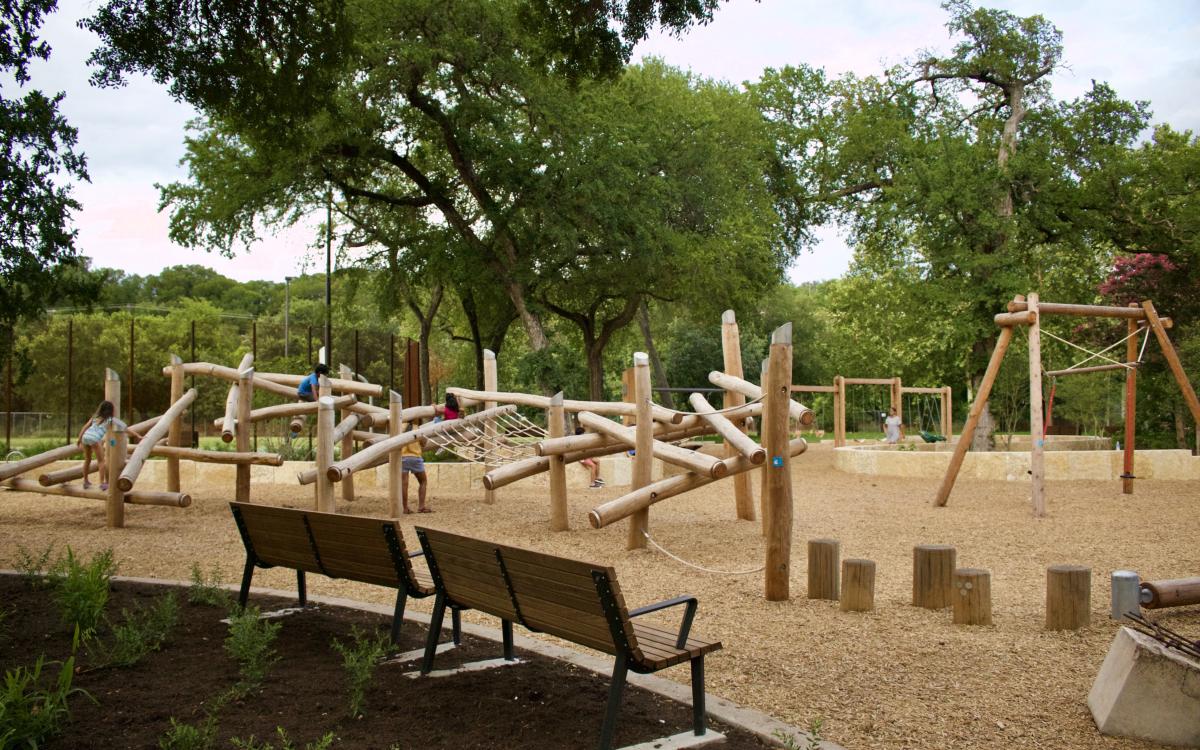Austin, TX
United States
The 13-acre project revitalizes the southernmost tip of Pease Park, known as Kingsbury Commons, which is the first SITES Gold certified park in Texas. As the recreational heart and cultural soul of Pease Park, Kingsbury Commons serves as the welcoming front door to the park and consequently, is the first significant project implemented from the Pease Park Master Plan. The redesign of Kingsbury Commons celebrates the cultural and ecological history of the site. It enriches the area by infusing the park with additional opportunities for play, fitness, and connection to nature.
The project is located on the southern end of the Pease District Park in Austin, Texas. The land which was formerly part of the 365-acre Woodlawn Plantation was donated in 1875 to the city of Austin by Texas Governor Elisha M. Pease and his wife Lucadia Pease. The beloved park is known for its historic structures, wooded trail system, access to Shoal Creek, and the annual Eeyore’s Birthday party public event. The surrounding area is highly urban and within walking distance to local restaurants, shops, and businesses. The site is easily accessed by public transportation.
The Commons developed on this 100-year floodplain site reduces development impacts, supports the local economy, and improves human health by being located within an existing urban environment. Site users can enjoy local restaurants, museums, recreational facilities, public transportation and other amenities located within a short walking distance from the site. It also took care to ensure the landscape was developed as sustainably as possible:
• The project captures disrupted spring flow running down the gutter of Kingsbury Road and reconnects the spring to a restored wet weather hillside stream. Native vegetation with deep fibrous root systems enhance the streams habitat value, encourage infiltration, and help prevent soil erosion. Large limestone blocks for seating provide opportunities to observe this unique park feature.
• Native plants were used extensively in order to reduce water use, provide wildlife habitat, connect site visitors with beauty of local ecosystems. The project has a native plant score of 41.3%.
• The project restored 12,447 cubic yards of soil. To ensure soil quality, extensive testing was conducted on the organic matter content, chemical characteristic and bulk density of the soil. Healthy soils are better able to sustainably support vegetation and provide benefits including nutrient cycling, water storage, and rainwater infiltration.
• 23% of the total materials cost went towards materials comprised of recycled content, which help to reduce the consumption of virgin feedstock and reduce landfill waste. An additional 34% of the total materials costs went towards regionally sourced materials, which reduce the energy used for transportation, promote regional identity and support the local economy.
Pease Park has a long and storied history in Austin, which the project sought to enhance and protect. The whimsical 1920’s Tudor Cottage, the most recognizable landmark of Pease Park, has been repurposed into a community gathering space. The Tudor Cottage will then be open to the public for events, receptions and gatherings. Other historic features built in the 1920’s and during the Civilian Conservation Corps-era such as picnic tables, walls, and bridges will be restored and protected for future generations to enjoy.



